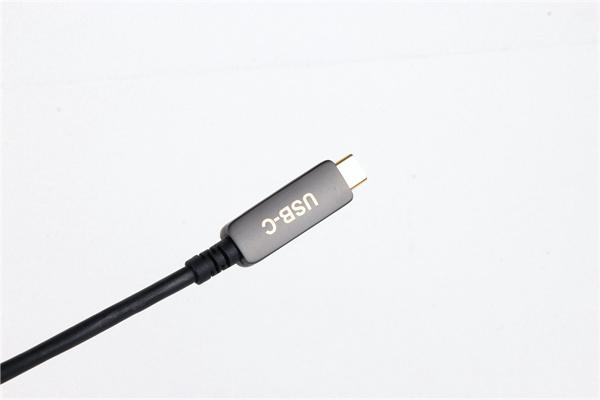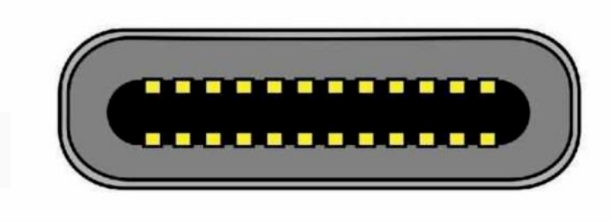In the rapidly evolving landscape of technology, connectivity standards play a crucial role in shaping user experience and device interoperability. Among these available options, USB Type-C has emerged as a frontrunner, poised to become the universal standard for connectivity. This versatile interface, known for its reversible design and multifunctional capabilities, is gaining traction across various industries and devices, from smartphones and laptops to smart home systems and automotive applications.
Type-C's rise to prominence is not just attributed to its technical superiority but also the global push for standardization and sustainability. More and more countries and organizations are driving initiatives to make USB Type-C the default charging and data transfer solution.
However, the process of widespread adoption is not without its challenges. In this article, VCOM will take you to learn the key features and advantages of USB Type-C and discuss the potential hurdles in its path to becoming the universal connectivity standard.

Key Features and Advantages of USB Type-C
Compared with Type A and B, USB C has many significant advantages
Reversible Design
One of the most user-friendly features of USB Type-C is its reversible design. Unlike its predecessor, USB Type-A, which can only be plugged in one way, Type-C can be inserted in either direction. This seemingly small feature significantly enhances user experience, eliminating the frustration of attempting multiple insertions before getting it right. The 24-pin symmetrical design allows for double-sided insertion, making it more convenient and efficient for users.

High-Speed Data Transfer
USB Type-C supports multiple USB protocols, ranging from USB 2.0 (480Mbps) to Thunderbolt 4 (40Gbps). This compatibility ensures that Type-C can handle a wide range of data transfer needs, from simple file transfers to high-speed data exchanges required by modern devices. The latest USB4 protocol, compatible with USB Type-C, is widely used in high-end laptops, providing ultra-fast data transfer speeds that cater to the demands of advanced computing and data-intensive applications.
Power Delivery (PD)
One of the most significant advancements with USB Type-C is its power delivery capabilities. USB Type-C supports various power delivery standards, with the ability to deliver up to 100W of power. This versatility promotes faster charging times, making it ideal for a range of devices, from smartphones to laptops. The efficiency of USB Type-C’s power delivery not only saves time but also contributes to energy savings and reduced electronic waste, addressing environmental concerns associated with power consumption.
Video Transmission
USB Type-C is not just limited to data and power transfer; it also supports video transmission. Capable of transmitting video signals up to 8K resolution, USB Type-C is compatible with the DP1.4 protocol. This multifunctionality allows for single-cable solutions, simplifying connections between devices such as monitors, mice, keyboards, and other peripherals. This feature is particularly beneficial for users seeking a streamlined and clutter-free workspace.
Broader Implications and Applications
Regulatory Push
The push for USB Type-C is not just driven by technological advancements but also by regulatory measures. The European Union has mandated USB Type-C as the universal charging standard by 2024. This legislation aims to reduce costs and electronic waste by standardizing charging ports across devices. The expected consumer impact includes annual savings of approximately 2.5 billion euros and a significant reduction in electronic waste, estimated at 11,000 tons. This regulatory push highlights the global shift towards more sustainable and efficient technology standards.
Strategic Shifts by Large Manufacturer
A critical endorsement of USB Type-C came in 2023, when Apple launched its iPhone 15 series, abandoning the long-used Lightning interface in favor of USB Type-C for all its products. This strategic shift by one of the world's largest and most influential tech companies underscores the growing importance and acceptance of Type-C interface. Apple's decision is likely to influence other manufacturers and accelerate the adoption of USB Type-C as the industry standard.
Advancements in Fast Charging
The evolution of USB Type-C has led to significant advancements in fast charging technology. The latest USB PD3.1 standard increases charging power from 100W to 240W, supporting up to 48V output. This enhancement extends the use cases of USB Type-C beyond consumer electronics to include IoT devices, smart home applications, power tools, automotive systems, and medical devices. The increased charging power and efficiency make USB Type-C a versatile solution for a wide range of applications, further cementing its position as the future standard.
Challenges in Popularizing USB Type-C
Cost of Transition
Despite its numerous advantages, the transition to USB Type-C is not without challenges. One of the primary hurdles is the cost associated with replacing existing Type-A and proprietary connectors. Infrastructure upgrades to support USB Type-C can be significant, requiring substantial investment from manufacturers and consumers alike. For consumers, the initial cost of replacing legacy devices and accessories with Type-C compatible ones can be a deterrent, slowing down the adoption process.
Compatibility Issues
Another challenge in popularizing USB Type-C is compatibility with older devices. Many legacy devices do not support USB Type-C, necessitating the use of adapters to connect with newer devices. This dependency on adapters can be inconvenient and may deter users from fully embracing the new standard. Additionally, the need to maintain compatibility with older USB standards and proprietary ports can complicate the transition, creating a fragmented user experience.
Quality Variance
The quality of USB Type-C cables and accessories can vary significantly, leading to performance issues. Not all Type-C products are created equal, and the market is flooded with subpar options that do not meet the necessary standards for optimal performance. The lack of strict certification requirements for Type-C products can result in unreliable and potentially unsafe accessories entering the market. Ensuring high-quality and certified products is essential for maintaining the integrity and reliability of the USB Type-C standard.
Security Risks
The multifunctional nature of USB Type-C also introduces new security risks. The ability to transfer data, power, and video through a single port increases the potential for data theft and malware attacks. Compromised Type-C connections can be exploited to transfer malicious software or steal sensitive information. Addressing these security concerns is crucial to ensuring the safe and secure use of USB Type-C in various applications.
Conclusion
We believe that USB Type C will be more widely used in the future. As an electronic product company pursuing innovation, our R&D team has been continuously launching peripheral products adapted to Type C technology to meet the different needs of consumers.
If you are interested in our products, please check out here.
Tag:




